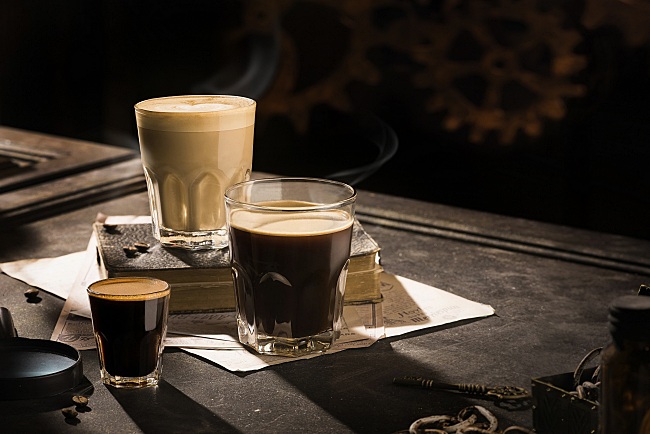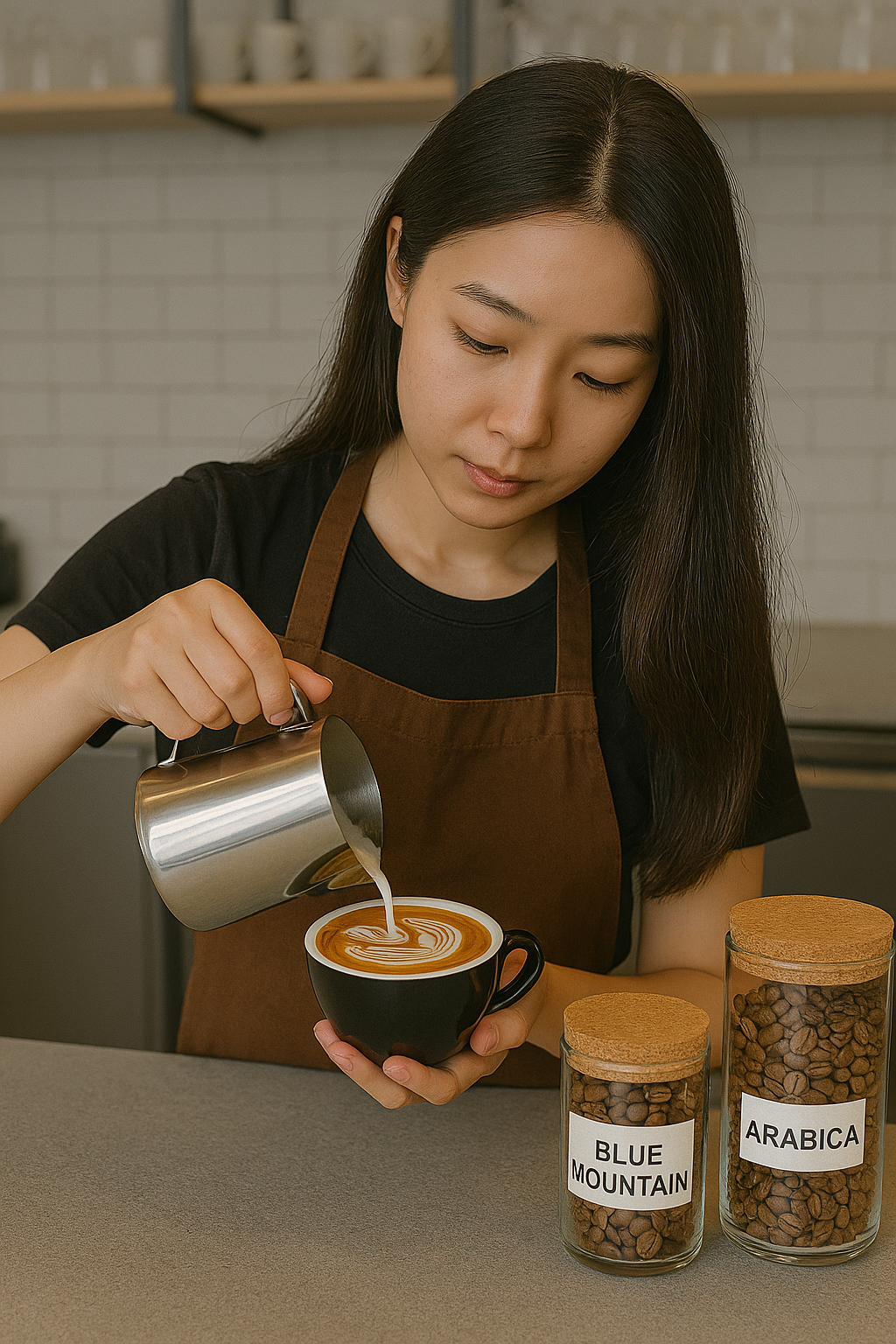What to Know Before Buying SOE Single Origin Espresso
Wiki Article
Understanding Coffee Beans: the Trip From Espresso to Blended Coffee Beans

The Origins of Coffee: An International Point Of View
While you might think about coffee as a modern staple, its origins map back centuries, intertwining with societies throughout the globe. The tale begins in Ethiopia, where tale says a goat herdsman called Kaldi discovered the invigorating effects of coffee beans after observing his goats frolicking energetically after consuming them. This sparked rate of interest, bring about coffee's spread to Arab investors that cherished the brewed drink. By the 15th century, it got to Persia, Egypt, and Turkey, where coffeehouses ended up being social centers for conversation and culture.As trade courses expanded, coffee made its method to Europe in the 17th century, quickly gaining popularity. Each culture included its one-of-a-kind twist to coffee preparation, enhancing its background.
Cultivation and Harvesting of Espresso Beans
As coffee's trip advanced, the emphasis changed to the farming and harvesting of details bean selections, specifically those used for espresso. You'll discover that coffee beans usually originate from Arabica or Robusta plants, each offering distinct flavors. The ideal expanding problems consist of high altitudes and rich, well-drained dirt, which improve the beans' top quality.Throughout the harvest, picking methods vary. Timing is important; you want to gather when the cherries reach peak perfection for maximum flavor.
Once collected, the beans are planned for processing, which is essential in establishing their last preference. Recognizing the cultivation and collecting procedures offers you understanding right into what enters into your favored espresso, enriching your recognition for each and every mug.
Processing Techniques: From Cherry to Bean
Currently that you've found out about harvesting espresso beans, let's discover just how those cherries change into the coffee beans you love. You'll see how various harvesting strategies impact taste, adhered to by the crucial steps of fermentation and drying. Lastly, we'll damage down the milling and grading procedure that establishes your coffee's high quality.Collecting Methods Clarified
When it comes to coffee, recognizing harvesting methods is crucial, since they straight affect the taste and high quality of the beans you enjoy. There are 2 main approaches: selective picking and strip picking. Selective picking entails hand-picking only ripe cherries, ensuring you get the very best high quality beans. This method typically causes a richer taste account, though it's even more labor-intensive. On the other hand, strip choosing means collecting all cherries at the same time, no matter ripeness. While it's quicker and less costly, this can cause a mix of flavors, impacting the end product. Inevitably, the option of gathering strategy can substantially affect your coffee experience, so it deserves knowing exactly how those beans made it to your mug.Fermentation and Drying
After harvesting, the following action in processing coffee beans play a significant duty in forming their taste. You'll find that fermentation is essential, as it helps break down the mucilage bordering the beans, boosting their taste profile. Relying on the method, this process can last from a few hours to a number of days, with varying results based upon temperature level and humidity.Sun-drying permits the beans to absorb flavors from the setting, while mechanical drying assurances consistent dampness degrees no matter of weather. Correct drying out is essential to stop mold and preserve the beans' top quality, eventually influencing your cup of coffee.
Milling and Grading Refine
As fermentation and drying out set the stage for flavor development, the milling and grading process guarantees that just the best coffee beans make it to your mug. This phase includes getting rid of the outer layers of the coffee cherry, including the parchment and husk. High-quality beans receive a higher grade, resulting in a richer coffee experience.Toasting Techniques: Opening Flavor Possible
When you roast coffee beans, the approach you select can drastically influence the taste account. Comprehending the connection between time, temperature level, and roasting methods is key to disclosing the possibility of your brew. Allow's explore exactly how these aspects come with each other to develop the excellent mug.Roasting Techniques Discussed
While you may assume that all coffee roasting methods generate the exact same outcomes, the fact is that each strategy exposes distinct taste potentials in the beans. You can select between methods like drum roasting, air roasting, or even typical frying pan roasting. Drum toasting uses a rotating drum to evenly distribute warm, enhancing caramelization and generating a well balanced taste. Air roasting, on the various other hand, flows hot air around the beans, advertising a lighter roast with noticable level of acidity. Pan roasting permits for hands-on control however needs continuous attention to prevent burning. Each method has its nuances, so trying out various methods can assist you discover the perfect roast that straightens with your taste preferences. Enjoy the trip of locating your optimal cup!
Impact on Flavor Account
Different toasting techniques not only affect the procedure however also substantially influence the taste profile of the coffee beans. Dark roasts, on the other hand, bring out bold, great smoky flavors, sometimes covering up the bean's special qualities. Recognizing these subtleties helps you value the artistry behind your cup of coffee, enhancing your general experience with every sip.Time and Temperature Level Factors
To release the full flavor possibility of coffee beans, both time and temperature throughout the roasting process play significant functions. When roasting, you'll find that higher temperature levels can rapidly create tastes, but if you hurry it, you could end up with burnt notes. On the other hand, lower temperature levels permit an extra gradual taste development, showcasing the beans' distinct qualities.
Timing is just as vital; extending the roast too long can lead to a loss of level of acidity and brightness, while also short a roast could leave the beans underdeveloped. Discovering Single Origin Espresso that sweet spot requires practice and experimentation. By readjusting these aspects, you can disclose the abundant, complicated flavors hidden within each bean, developing a really impressive coffee experience.
The Art of Blending: Crafting Distinct Coffee Profiles

Start by picking a base coffee that provides a solid structure. A brilliant Ethiopian bean can bring fruitiness, while an abundant Brazilian coffee adds body.
As you blend, maintain in mind that each mix informs a story. You're not just making coffee; you're producing an experience. Take your time, preference often, and take pleasure in the trip of finding your signature mix - Single Origin Espresso.
Brewing Approaches: Exactly How Preparation Affects Flavor
Blending coffee opens a domain of flavor opportunities, but how you make that blend can substantially affect your final cup. Different brewing approaches draw out distinct tastes and scents, so it's important to pick intelligently. A French press enables debris and oils to continue to be, developing an abundant, full-bodied experience. On the other hand, a pour-over highlights the coffee's clarity and illumination, perfect for showcasing fragile notes.Coffee, with its high pressure, produces a concentrated shot that highlights sweet taste and crema. If you choose a lighter mixture, take into consideration a chilly mixture approach; it produces a smooth, much less acidic taste.
Ultimately, experimentation is crucial. Readjusting variables like water temperature level, grind dimension, and make time can transform your coffee's account. Accept the art of developing to find the flavors concealed in your coffee blends. The right approach can boost your experience to brand-new elevations.
The Future of Coffee: Sustainability and Advancement
As the coffee industry progresses, sustainability and innovation are becoming necessary for dealing with environmental difficulties and conference consumer needs. You'll discover that even more coffee companies are adopting environmentally friendly methods, from sourcing beans fairly to carrying out lasting farming methods. These changes not just assist the world yet likewise improve the high quality of the coffee you appreciate.You might see advancements like naturally degradable product packaging and water-saving developing approaches that minimize waste. Advanced modern technology, such as blockchain, is likewise ending up being prominent, making certain openness in the supply chain, which enables you to trace your coffee back to its origins.
Furthermore, buying regional neighborhoods and sustaining farmers through reasonable trade initiatives fosters an extra lasting coffee ecological community. As you sip your next mug, bear in mind that your selections can add to a brighter future for coffee. By choosing for sustainable brands, you're not just enjoying a drink; you're making a favorable influence on the world.
Regularly Asked Inquiries
What Is the Difference In Between Arabica and Robusta Beans?
Arabica beans are smoother, sweeter, and have a greater level of acidity, while robusta beans are more powerful, much more bitter, and consist of more high levels of caffeine. When brewing your coffee., you'll discover these distinctions in taste and aroma.Just How Does Altitude Affect Coffee Bean Flavor?
Elevation influences coffee bean flavor considerably. Higher altitudes produce beans with brighter level of acidity and complex tastes, while lower elevations typically yield beans that are much heavier and less nuanced. You'll notice these differences in your mug!What Are the Health And Wellness Benefits of Alcohol Consumption Coffee?
Consuming alcohol coffee can improve your power, enhance psychological emphasis, and also boost physical performance. It's rich in antioxidants, might lower the threat of particular conditions, and can promote a healthier metabolic rate when eaten in small amounts.Can Coffee Beans Be Recycled for Developing?
Yes, you can reuse coffee beans for brewing, yet the flavor could be weak. If you enjoy exploring, attempt recycling them in different means, like cool brews or including in shakes for an additional kick.Just how Should I Store Coffee Beans for Quality?
To keep your coffee beans fresh, save them in an impermeable container in an amazing, dark area. Stay clear of revealing them to light, moisture, or heat, as these factors can quickly weaken their taste and fragrance.Comprehending Coffee Beans: the Trip From Espresso to Blended Coffee Beans.
Currently that you have actually discovered regarding harvesting espresso beans, allow's check out how those cherries change right into the coffee beans you like.When you roast coffee beans, the method you pick can considerably influence the taste profile - Single Origin Espresso.While you may assume that all coffee toasting approaches produce the exact same outcomes, the truth is that each method exposes distinct taste potentials in the beans.Different toasting approaches not just affect the procedure yet likewise considerably influence the flavor profile of the coffee beans
Report this wiki page